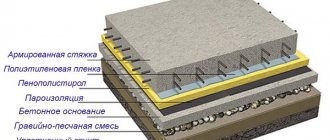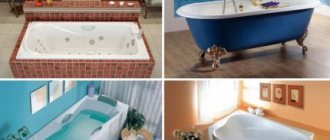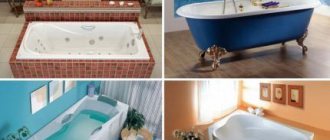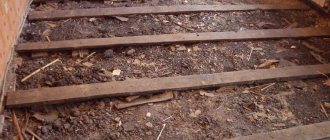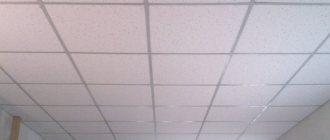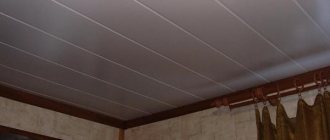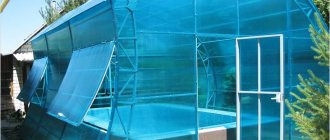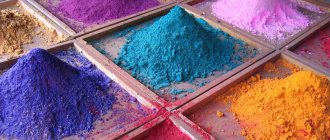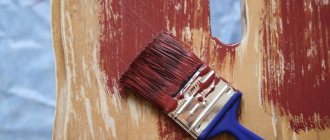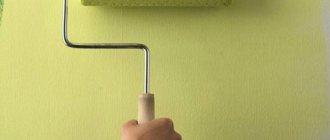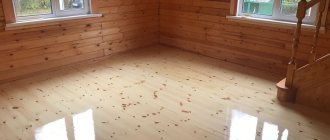How to paint a cabinet yourself?
Over time, furniture may lose its original appearance, but remains durable and strong. Throwing it in the trash is not the best solution; it is better to transform an old cabinet with your own hands. All actions can be performed at home. How to paint a cabinet to make it beautiful and safe? The choice of coating depends on your preferences; it can be acrylic paints or paints, or it can be improvised materials. When you update your furniture yourself, you save a significant amount of money and can turn all your ideas into reality.
Useful tips
And just a few more tips that will complete this material and allow you to obtain additional useful information.
- It is better to take all materials in the form of primer, putty, varnishes and paints from one manufacturer. This ensures their compatibility. It's better not to waste money. Plus, you will significantly save time on searching for components;
- Take advantage of the color palette. Original and bold combinations help to benefit from contrast in the interior;
- Use only new rollers and brushes. It’s better not to take old ones that have been lying around on the balcony since the previous renovation;
- The most even and accurate layer is laid when using spray cans. But they cannot always be used for various reasons;
- Rollers are used for painting wide surfaces;
- Use brushes only to tint the end parts, fittings, and hard-to-reach corners, otherwise the pile may interfere with the creation of a smooth surface;
- Never forget masking tape. This will prevent paint from getting where it is not needed. Plus it will allow you to apply paint or varnish as smoothly and accurately as possible;
- Even when working with safe compounds, use a respirator and ventilate the room. It's better to play it safe once again.
That's all, actually. Now you know not only how, but also with what you can repaint your old furniture or elements you just assembled with your own hands.
That's all I have
Thanks everyone for your attention! Be sure to subscribe, leave your reviews and don't forget to give a good rating! Watch this video on YouTube
Watch this video on YouTube
The right choice of paints and varnishes
Anyone can paint a cabinet with their own hands, but before choosing a product for chipboard, evaluate the furniture and its original color. Decide whether you want to simply freshen up the color scheme or change it completely. If you decide to completely renovate, consider in detail whether it will suit the design of the room and how to change the color completely or partially.
Check out the offers that stores provide. It’s better not to be lazy and go through several options to choose high-quality and inexpensive material.
Paint or varnish application technology
Application of materials is carried out either manually or mechanically. In the first case, achieving high quality is difficult; considerable experience and skills are needed. You can manually renew the coating on country furniture, refresh household or auxiliary items. However, an even layer without streaks or drips can only be applied by spraying.
There are two types of spraying:
- air spray. Use a compressor and a special paint gun. The procedure is quite specific, requiring a separate room and well-organized working conditions;
- airless spray. This application method does not involve the use of a pressurized air jet, so the equipment required for it is much smaller. However, the technology has some limitations on the viscosity of the material and does not produce a thin layer.
Both mechanized methods require experience and skills. An untrained person will never be able to apply a neat layer without drips the first time. Therefore, before starting work, it is necessary to practice, as they say, to get better at it. No explanations will help here; you have to try it yourself, look for the optimal thickness of the torch, select the appropriate air pressure and viscosity of the material.
There are no universal recipes here, but you need to know the general requirements:
- each pass is made in a horizontal direction, along the entire length of the part, holding the gun at the same distance from the surface;
- the next pass should overlap the previous one by approximately 1/3;
- You should not try to completely paint the plane right away. It is better to do several thin layers than to apply a thick one. This will cause streaks that are very difficult to remove.
What should you pay attention to?
To determine the amount of paint material for cabinets, make a calculation based on the consumption of 2 layers (3 are possible).
Important! The presence of lead in the composition indicates that the paint is unsafe. Inhaled vapor containing lead is hazardous to human health. It is better to purchase alkyd paints, they are absolutely safe and dry several times faster.
Please note the date the material was released.
If you buy varnish, buy it transparent or with an imperceptible tint.
After choosing, test the product on a small piece of the stove. Each applied layer must dry completely. Only then can you decide whether this material is suitable for restoration.
Types of varnishes for MDF panels
In some cases, MDF wall panels are not painted, but varnished. This approach is very widespread, although it is considered more complex and expensive.
Lacquered panels certainly look very noble and attractive. Varnishing allows you to emphasize the natural shade of the material, give it shine and pleasant smoothness.
Applying varnish to MDF is a painstaking process that requires care, accuracy and certain knowledge regarding the specifics of the technique. Varnishing occurs differently in open and closed spaces, and the process is modified in accordance with the potential format of use of the product.
In total, there are eight traditional types of varnish coating for MDF boards. Let us describe each of these varieties in more detail.
- Alcohol varnish
To create the desired consistency, special thick resins of artificial origin are mixed with industrial alcohol. Such varnishes are inexpensive and are considered average in quality. As for the drying process, on average it will not take more than half an hour, although to achieve a guaranteed result it is recommended to allocate up to 1 hour for drying. Much will depend on how many layers and in what humidity the alcohol varnish was applied.
- Epoxy varnish
It contains two components that provide maximum protection against mechanical damage. This coating increases the strength of the MDF panel several times, and is therefore perfect for painting countertops. In addition to impact resistance, epoxy mixtures also guarantee protection against the influence of moisture and even water flows on the product. Accordingly, this varnish can be used for garden furniture made from MDF sheets.
- Alkyd-urea varnish
The composition is again formed by two main ingredients - alkyd resins and urea. But in this case, a fixing element (hardener) is added to the mixture.
The main features of alkyd-urea coating are high strength and maximum light reflection. The latter property allows you to achieve a luxurious shine to the varnished surface.
- Nitrocellulose varnish
Once again, the name of the varnish reflects its basic composition. Varnishing with such a product allows you to achieve sufficient moisture resistance, but you can’t really count on protection from mechanical damage. The cost is considered quite reasonable, so if protection against impacts on the surface is not a critical aspect, this option can be considered a compromise solution.
- Polyester varnish
The composition in this case includes many different components, the main one of which is polyester resin.
The best option for situations where it is important to protect an MDF product from chemical exposure. In medical institutions and chemical laboratories, such varnishing is almost the only solution for MDF furniture
In addition to resistance to chemicals, polyester varnishes are also resistant to overheating - they do not melt, crack, become cloudy or deform.
- Acrylic urethane varnish
The safest water-based composition. It is considered environmentally neutral and does not harm health.
At the same time, due to the peculiarities of the composition, acrylic-urethane varnish adheres perfectly to the surface of the MDF panel and dries quickly.
It is resistant to moisture (not water flows!) and changes in ambient temperature.
- Polyurethane varnish
It can be presented in one of three different variations - with one, two or three components in the composition.
This varnish takes as long as possible to dry. Sometimes the process can drag on for up to a week or two, but the end result is the hardest possible coating, which is almost impossible to damage in any way. Highest strength, aesthetic appearance and perfect adhesion. It is virtually impossible to separate the polyurethane varnish from the surface after it has completely dried - it literally becomes part of the MDF surface.
- Acrylic lacquer
Another safe option for health with minimal toxicity. Acrylic compounds can even be inhaled without much risk or discomfort. Moreover, acrylic varnish has no effect even on food with direct, long-term contact. This makes it possible to varnish furniture for kitchens and catering areas with acrylic.
Such varnishes can be diluted with clean water to achieve the desired consistency. As a result, the coating is more or less dense. The degree of transparency of the varnish and its strength can be controlled accordingly. In general, acrylic varnish occupies a middle position in its performance characteristics and stands out only for its environmental friendliness.
Choosing a color based on the purpose of the item
If you decide to radically change the color of the furniture, focus on its purpose. If the closet is located in the nursery, it is better to use light and bright colors that are not harsh on the eyes. For girls, pastel shades or plant motifs are suitable; for fingers, it is appropriate to use more dynamic colors.
If the cabinet is in the kitchen, choose colors that will match the overall style. Since sideboards are the first thing people notice, they should decorate the interior.
In small rooms it is not advisable to use dark colors.
If we are talking about a bedroom, the choice of color should be selected taking into account the lighting of the room and its overall style. Variegated colors will be inappropriate.
A living room closet makeover should come from the overall style. It is important that the furniture is in harmony with the wallpaper. Use bright colors, combine several shades with each other and the old shabby cabinet will not be recognized.
The avant-garde decor will look interesting in the hallway, and the same will be interesting in rooms with adult children. In design there is no concept of old furniture; designers use the word “Vintage”, which is fashionable in the modern world, which means
Interesting DIY cabinet painting can become a trend.
Furniture can even be painted white if it looks appropriate in the room.
What do you need?
To paint the cabinet, choose alkyd products. They are ideal for materials such as chipboard, MDF and chipboard. Such products level the surface, do not leave gaps, do not have a pronounced odor and dry quickly enough.
To update your furniture you will need:
- Old polished cabinet (there are many polishing methods, choose the one that suits you best).
- Acrylic putty and primer based on adhesion. These materials will be used to prepare the cabinet surface. It is important to use materials designed for wood flooring.
- Solvent. With its help, old paint and varnish will be removed.
- Degreasers. Needed to prepare chipboard for painting.
- Flange cloth (if you don’t have one, any cloth will do).
- Rubber gloves (if you take fabric ones, the paint will be absorbed and leave marks on your hands).
- Scotch tape used in construction.
- Sandpaper and glue.
Painting facades
Before painting the facades, you should dismantle them, remove the handles, fittings, and cover the decorative inserts and hinges with masking tape so that nothing gets in there during painting. After this, you need to lay newspapers or film on the work surface so as not to stain the floor or kitchen table with paint. Before painting, you should also wear protective equipment: gloves, goggles and a respirator. Even if the paint is non-toxic, dust cannot be avoided during the sanding process.
Grinding
Before painting the kitchen unit, you should remove the old coating. In this case, it is necessary to treat the surface with sandpaper, first coarse-grained, and then fine. A grinding machine will greatly facilitate manual labor. You can also use nail polish remover. To remove PVC film you will need a hair dryer. With its help, you need to heat the film from the front side and carefully remove it from the facade. Please note that during the work a rather pungent odor will be released, so it is advisable to choose a non-residential premises for this procedure. After sanding, you need to remove dust from the surface with a damp sponge or rag, and then degrease it with a special solvent.
Primer
Primer for plastic or wood differs in composition, so before updating the kitchen facade, consult with a sales consultant in choosing the right product. The quality of the primer determines how well the painting will proceed. The substance must be applied in 2 thin layers. After each application, it is recommended to wait until it dries completely and then leave the product for a day.
Coloring
To properly paint kitchen facades with your own hands, you need to cover the surface with enamel in 2-3 layers using a brush with soft bristles or a roller, strictly adhering to one direction. In this case, a spray can will be very effective, as it is easy to distribute the paint evenly. When using multiple colors or shades, the borders can be protected from paint using tape. After painting, you must also wait until it dries completely. The estimated time is usually indicated on the can or spray paint can.
Finish coating
A substance called glisal is often applied to the surface of the product after painting to give it a glossy shine. The product must be diluted with water in the proportion specified in the instructions and applied to the facade. The glaze method will help create decorative patterns. Using polyethylene, a damp sponge and a hard-bristled brush, you need to move from one area to another, drawing chaotic lines and patterns. After work, you should leave the product to dry for a week. There is also an option to open the kitchen facades with regular varnish. It can be glossy or matte, but it is advisable to choose a transparent substance. Both glisal and varnish have a pungent odor, so it is necessary to ventilate the kitchen after work. When the product is dry, all that remains is to assemble it and attach the updated facades back to the set.
What could be nicer than giving new life to an old but beloved product? Anyone can feel like a designer and restorer; all it takes is desire and creative inspiration. You can paint the kitchen set with your own hands by watching the instructional video, as well as photo instructions presented on the website.
Recommendations for materials
When choosing brushes, pay attention to their quality. It is important that the hairs do not fall out, otherwise the restoration will not bring the desired results. The same goes for the roller. The foam must be securely fastened. Every building store has kits for working with acrylic.
When wondering how to paint a chipboard cabinet with your own hands, start by preparing it. Prepare the place where you will perform the necessary procedures. To avoid smearing the floor, cover it with newspapers, cardboard or oilcloth. To avoid an unpleasant pungent odor in the room, do everything in a closed loggia.
Restoration tools
Painting a chipboard cabinet will take some time. To speed up the process a little, all the tools necessary for the work must be prepared in advance:
- spatulas;
- several knives;
- suitable screwdrivers;
- hair dryer used at a construction site;
- brushes and rollers for acrylic, scissors.
Just in case, prepare a hacksaw if you need to straighten cracked corners. They will need to be sanded with sandpaper.
Processing process
How to repaint furniture if there is a layer of old paint on it? Repainting the cabinet and changing the color is very simple, you should start with the treatment, and only then proceed to painting.
- Before you begin processing, disassemble the structure and unscrew all internal parts.
- Apply solvent to the surfaces and use a spatula to remove any remaining previous coating. It may be necessary to apply the solvent several times. If the layer of old paint is thick, apply the product and let it soak for a few minutes so that the coating swells and is easy to remove.
- Using a degreaser, remove grease and adhered dirt. We dry the parts and clean them with sandpaper, creating a rough finish for the product.
- Using putty, we fill in all the cracks and leave to dry; if all the irregularities are missing, we proceed to priming.
- Prepare the primer according to the instructions and apply to the surface. It is better to apply in several layers, allowing each layer to dry.
Important! You need to purchase a primer that is as close in color as possible to the furniture.
- You can speed up the drying process of cabinets using a hair dryer.
- Prepare paint materials. If they are too thick, dilute with solvent. You can test different materials on individual pieces on particle boards.
- Apply paint in equal quantities and use a roller to smooth it over the surface. If there are raised joints, we paint them with a brush.
An easy way to repaint furniture and doors
Often, in order to change the interior, renovation is not necessary. It is enough to refresh the textiles, decorate one accent wall with wallpaper, change the carpet and do something with the furniture. But what? Should I buy a new one? Do-it-yourself renovation expert Kristina Nikiforova shared tips that will help save time and nerves if you decide to repaint an Ikea table or grandfather’s old chair yourself.
I won’t tell you a very easy way to repaint, you need to make an effort everywhere. But if you have the desire and the mood, then everything will work out. I have the following sequence of actions: wash, sand a little, remove dust, degrease, cover with primer in 1-2 layers, paint in 2-3 layers, then wax. I'll tell you more!
What can be painted:
— furniture made of chipboard in film; — MDF in film, for example, a kitchen; - lacquered furniture; — doors, both made of wood and in film; - tables, cabinets, beds, wardrobes.
Where to start?
First thing to do is wash! Thoroughly remove stains, grease, dirt and odors—all the things that make old furniture look old. To do this, move the furniture away from the wall, cover the walls and floor with protective film, prepare a soap solution and wipe your product with a sponge soaked in it. Try removing stubborn stains with vinegar, alcohol, white spirit or acetone. Don't forget to wear gloves and a protective mask!
Regarding decoration
Very often, wood boards are decorated with various patterns, ornaments, contrasting inserts and other elements. You can use special napkins for decoupage, straws, colored paper, newspaper and magazine clippings, and more.
It is important to harmoniously combine the overall color of the facade of MDF cabinets and the inserts.
You can combine contrasting colors, add painting, and if you know how to draw, you can create an exclusive design.
Using sanding, applying a patina or special products, you can provide furniture with a vintage look. That is, you can make antique furniture with your own hands.
Such restoration of sliding wardrobes made of MDF or ordinary wardrobes will look advantageous in any interior, and most importantly, restoration will not require large expenses. Using laminated furniture is very convenient in any home.
Photos of cabinets before and after restoration:
Now you know what and how to paint an old chipboard cabinet, which means you can get to work. This method allows you to restore not only cabinets, but also sideboards, cabinets, chests of drawers and other furniture.
To varnish or not
The varnish coating fixes the color, protects the surface of the furniture, and the product looks antique and well-groomed. Be sure to protect with varnish the furniture that is often opened and closed.
For varnishing, use specialized furniture (not parquet) matte or transparent varnishes. The second layer is applied 24 hours after the first coating.
Varnish choice:
Alcohol varnish is used when restoring antique objects.
New, popular acrylic varnish, odorless, suitable for indoor and outdoor use. Economical product - water is used for dilution.
Durable alkyd varnish film withstands abrasion. A solvent is used for dilution.
Little oil varnish is used; it is often used to cover the floor. For dilution you need drying oil that dries for at least a day.
Polyurethane (ship) varnish has increased wear resistance due to the appearance of a protective, quick-drying film.
Nitrovarnishes are inexpensive and form a durable protective film. No special primer is required before coating. When applied, it is diluted with a solvent.
How to paint a cabinet with your own hands
Painting allows you to transform furniture, which becomes a bright accent in the interior. The method of updating depends on the wear and tear of the model and the design project. Dyes and varnishes allow you to restore even old cabinets and sideboards. The method of decorating interior items is available for independent execution, is economical, and allows you to embody original decorative ideas. Before you paint the cabinet with your own hands, you need to determine the color combinations and type of material.
Chalk paints - characteristics
There are many types of chalk paints on the market, they differ from each other mainly in additives. All products of this type consist of chalk and water (in varying proportions). In addition, they may include:
- resins of synthetic or vegetable origin;
- silicates;
- casein;
- linseed oil.
Depending on the additives, resin paints, mineral paints, milk paints, oil paints and the like are distinguished.
When considering these options, it is difficult to separate the best and worst quality because it all depends on whether they are used properly and in accordance with their intended purpose. For example, for furniture that hasn't been used much, medium quality paint works well. However, already in the kitchen and bathroom, the coating must be resistant to moisture and variable temperatures.
A completely different type of paint will also be needed to cover varnished or varnished hardwood surfaces.
Coatings for decorating fabrics and upholstery will require another type of chalk paint.
Common features of all chalk compositions:
- good adhesion;
- dullness;
- fast drying time;
- environmental friendliness;
- do not cause allergies;
- simple preparation of the substrate.
Color selection and design
You can update an old cabinet and give standard furniture an original design by painting. Using materials, you can make the surface glossy or matte, perform monochrome decoration or combine contrasting shades, as well as complement the finish with artificial aging and decoupage. When choosing a shade, you must take into account the color scheme of the room.
The classic option is to paint the furniture white. This will add freshness and light to the interior; the item will become a bright accent in the room. White furniture can be painted antique with your own hands by combining bleaching and sanding.
Rich shades can prolong the use of old furniture. Popular colors are green, yellow, red, orange, etc. When using bright colors in furniture design, designers recommend painting the walls in neutral tones. Cream, gray, powdery shades will become the background for rich colors. The colors of the facades are harmoniously combined with the neutral texture of wood.
Furniture painting is used to create an interior in the Provence style. Powdery pastel colors are popular in decoration. You can create a rare product by adding craquelure varnish. The material will give a lightly worn effect to wooden surfaces.
You can change the design of your kitchen by painting the kitchen cabinets; this option is simple and economical. The buffet can be monochrome or multi-colored - with a combination of bright and neutral colors.
Typical furniture can be transformed using the decoupage technique, creating a model in a retro style. Painting a rack will be an interesting design solution when using stencils, unusual color combinations, and artistic painting.
Purpose of describing the technological process of painting MDF facades
This description of the technological process is intended for obtaining opaque matte and glossy coatings. It is used for finishing relief facades and profile elements made of medium-density MDF boards. The quality of MDF board is confirmed by ISO 9001 certificate and meets the requirements of GOST 10632-89.
This technical description provides for the use of polyurethane paint OP 400 gloss and semi-matte produced by ICA (Italy), applied by pneumatic spraying with the obligatory use of polyurethane primer FP 285V from ICA (Italy).
Cabinet Painting Tools
To paint a cabinet yourself, you need to assemble a set of tools. You will need sheets of sandpaper, spatulas, a grinder, primer, putty, solvents, masking tape, a paint tray, glue, and a hair dryer.
Painting is done with brushes - narrow or wide, rollers - velor or foam rubber. A spray bottle or electric spray gun will help to apply the layer evenly. The equipment is used to process large surfaces.
For work you will need protective equipment: special clothing, glasses and gloves, as well as auxiliary materials: soft rags, sponges.
Varnishing
After painting, in most cases it is also necessary to varnish the product. The first layer of varnish, prepared for use, is applied at the same rate as primer (150 g per 1 sq. m).
The second layer is applied after the first layer has completely dried. Then, when this paint dries, you need to sand the MDF panel again. First, coarse-grain sandpaper is passed over its surface, and then fine-grained sandpaper is used. To prevent lumps from rolling off, the treated area is periodically moistened with water.
Another week after this, the MDF must be additionally polished with a sander and abrasive paste. This is the most correct technology, although at home, when working with your own hands, it is sometimes not followed, limiting yourself to ordinary varnishing.
What paint to paint the cabinet
In order to determine how to paint an old cabinet with your own hands, you need to study the compatibility of the dye with the material from which the furniture is made.
Acrylic-based coatings are the most popular for painting furniture, because... dry quickly, easy to apply, resistant to damage. The paint is diluted with water, which saves materials. The compositions do not have a strong odor and disappear quickly, so they are suitable for decorating children's rooms and kitchens. The material is applied with a brush or roller.
Cabinets made of chipboard and natural wood are painted with alkyd dyes. The material contains coloring pigments, kerosene solvent, and antiseptic additives.
A popular type of paint is in cans. The material is easy to apply and dries quickly. The paint is distributed evenly.
The choice of material is also influenced by the design project, because... the surface can be glossy or matte. For glossy products you will need enamel varnish paint, which adds shine to the surface. Matte shades are obtained after oil treatment. Transparent paints will help preserve the natural structure of wood.
How can you paint MDF doors?
How to paint MDF doors?
- choose paints without a strong odor, for example, water-based paints;
- quick-drying. These include acrylic-based paints;
- with a high percentage of adhesion for strong adhesion of the coating and the surface of the object;
- with low consumption;
- a certain color so that the door fits harmoniously into the interior of the apartment.
Interesting materials:
Why do you need a residence permit? Why do you need to join a trade union? Why do you need to play sports? What are ancient scrolls for? What are games for? Why are inverted asanas needed? What are boarding passes for? What are flax seeds for? Why are free economic zones needed? What are push-up supports used for?
How to paint a cabinet with your own hands at home?
1 1 1 1 1 1 1 1 1 1 Rating 4.79 (7 Votes)
| Imagine that you have recently completed a major renovation in your apartment and, having placed all the furniture in its place, you realize that the old wardrobe does not fit into the overall picture of the room: it does not match in color, the surface is faded and covered with cracks. Do you really have to get rid of the closet? Of course, you can try to buy a new cabinet, but you already spent money on repairs, and buying new furniture was not included in the estimate. In addition, there is no guarantee that you will find exactly what will fit perfectly into the updated interior. There is a great solution to this problem - repaint the cabinet in a suitable color! |
How to paint an old cabinet with your own hands
Furniture is one of those interior items that are purchased with the expectation of long service. There is no need to throw away used furnishings if, after repairing the cabinet, drawers and fronts, they no longer fit the interior or simply require updating. If the structure is strong and functionally satisfactory, it is enough to know how to paint an old cabinet with your own hands so that it can serve again and delight you with its appearance.
Features and benefits of MDF
MDF has a medium density and is produced by pressing fine wood chips. The whole process takes place under high pressure and high temperature, and lignin, a natural substance, acts as a connecting link.
Most often, MDF boards are used for the manufacture of furniture fronts for bedside tables and wall cabinets, and the main advantages of this material include:
- Good indicator of resistance to moisture;
- Resistance to high temperatures;
- Strength;
- Convenience during operation;
- Low production cost and, as a result, low price on the market;
- Resistance to fungi.
All of these properties listed above make MDF boards simply an irreplaceable material for the manufacture of furniture doors and facades.
However, despite all its advantages, MDF, like any other material, eventually loses the brightness of its colors and is subject to natural wear and tear.
What to do in this case? There are two options for solving this problem - purchasing new furniture or restoring (painting) old facades. This will be discussed in our article.
Is it possible to paint an old cabinet?
It all depends on the material from which it is made and in what condition it is. Smooth varnished surfaces require a special approach. For example, removing polish from the facades of Soviet furniture made in the 80s, if it has obvious signs of time in the form of chips and cracks, is labor-intensive and pointless. It is unlikely that this will be done neatly and evenly.
If the cabinet itself is in good condition and does not require restoration, then it can be painted with chalk paint. Chalk paint fits perfectly on surfaces made of veneer, wood, plywood, chipboard and MDF. Unlike acrylic, which requires:
- Complete removal of the varnish layer (for better adhesion of the coating to the surface). To do this, you will have to arm yourself with a whole arsenal of tools for sanding and sanding the old cabinet.
- Washing and removing dust from the surface, followed by degreasing.
- Applying primer and special contact agents before painting.
But with chalk paint the painting process is simplified:
- Glossy varnish and smooth surface are not a hindrance. There is no need to sand off the top layer of an old polished cabinet.
- Before painting, the surface of the old cabinet should also be washed, dusted and degreased.
- If the furniture has been painted with oil paints or coated with drying oil in the past, or the type of coating cannot be determined, it is recommended to use blocking primers before painting. This will eliminate the possibility of strange stains appearing.
- In all other cases, the role of the primer will be played by the first layer of chalk paint. It needs to be allowed to dry for several hours.
Create a rough surface
A varnished cabinet made of veneer, solid wood or laminated chipboard must be sanded before painting. This procedure requires a lot of time and effort if done manually. The presence of a grinding machine significantly speeds up and facilitates the process of creating a rough surface. It is necessary so that the new color lies evenly and adheres securely to the surface of the furniture.
Sanding machine for removing irregularities
The old varnish layer or enamel is removed with medium-grain sandpaper. When the entire surface has been processed, proceed to the use of fine abrasive. After sanding, it is necessary to remove accumulated dust from the furniture surface. Do not use a damp cloth or sponge. This will lead to the fact that the old layer of farba will be ingrained into the material, and the new one will lie unevenly.
An important preparatory stage is removing grease and dirt from the surface of the furniture. This procedure is performed after treatment with abrasive.
You can do without sanding. But only if high-quality spray paint is used. The wardrobe must be pre-treated with a degreaser (white spirit) and primer. After this, staining can be done.
What you need for painting
The most time-consuming and financially consuming process is preparing an old cabinet for painting. You may need:
- Sandpaper of different grits for sanding the top coat for better adhesion to the paint, a sponge and a brush for removing dust.
- Metal brushes for brushing if the cabinet is made of solid wood and the goal is to make the wood texture more expressive before painting.
- Grinding machine for automating sanding and brushing. By the way, you can use a screwdriver or drill with special attachments for this.
- A heat gun and a scraper/trowel if the old cabinet has been painted in the past.
- Wood putty for filling holes and irregularities, spatula.
- Solvent, primer, paint tray, masking tape, gloves and other protective items (apron, goggles, respirator, etc.).
- Narrow and wide brushes for painting, foam or velor rollers. Ideally, a spray gun.
Before the advent of chalk paints, acrylic-based compositions were most in demand. Acrylic paints have many advantages: they are diluted with water and mix easily, dry quickly, do not have a strong odor and are resistant to abrasion. Optimal for painting cabinets in children's rooms, bedrooms and kitchens.
To comply with safety precautions, painting should be done in the fresh air or in a well-ventilated area, away from flammable objects and potential sources of fire.
Types of paints
The finish for repainting furniture should be safe, practical and beautiful. The material can completely transform facades or add new notes to the existing design. There are 6 types that are used for interior items.
Silicone water emulsion
Paint is made from a color mixture based on water, polymers and dyes. Emulsion particles are dissolved in liquid. After application to the surface, the moisture evaporates, but the pigments with the fixer remain. Finishes containing silicone penetrate well into the upper layers of wood.
Long-lasting paint does not crack or peel, and the color does not fade. The material perfectly allows oxygen to pass through, so painted facades do not swell (do not “bubble”). The resin-based pigment “breathes” but does not absorb moisture. After application, the components dry quickly. Antibacterial additives are often added to the composition to protect the wood from rot and mold.
Silicone paintSource berkem.ru
Silicone water-based emulsion masks minor mechanical damage (up to 2 mm), so the finish is used without sanding or putty. Due to the antistatic properties of the material, dust does not accumulate on painted facades. The raw materials do not have a sharp, chemical smell, which allows them to be used in children's rooms. The only disadvantage of enamel is the high price.
Acrylic
Furniture paint combines the best properties of water-soluble and oil-based types. There are no toxic components in the composition, so the material does not stink and is safe for use indoors. Due to the high level of adhesion to the surface, it fits perfectly. To obtain uniform coloring, 2 layers are sufficient. Drying period – 2-3 hours.
Material option for furnitureSource vmirekraski.ru
After the paint has hardened, a thin protective coating appears on the furniture, resistant to mechanical damage and aggressive environmental influences. Due to the absence of flammable components in the composition, the raw material is highly fire resistant. To obtain a uniform layer, the facades are primed before application and cracks are puttied.
Acrylic paintSource kraskidlyamebeli.ru
The elasticity of acrylic protects the surface from cracking and preserves the original appearance of the furniture. The paint is tinted, giving the material the desired color. The compositions are matte and glossy. The facades are easy to care for and can be sanded and repainted. To reduce the thickness of the enamel, use water rather than chemical solvents.
Latex
Practical and easy to use, furniture paint is a water-soluble type. The liquid makes the composition viscous, which makes it easier to apply to the surface. Latex penetrates the upper layers of wood, creating a protective film that protects against moisture. High air permeability will preserve the structure of the facades in their original form. The material is afraid of the cold, so interior items are placed only indoors.
Waterproof coating Source berkem.ru
Cretaceous
Professional compositions allow you to work with surfaces of any neglect. With the help of chalk paints for furniture, it is possible to create a perfectly even matte layer on the facades. To obtain a glossy shine, a finishing (wax) coating is applied on top. The material dries quickly and is suitable for wood, metal and plastic. The only negative is the high price.
Option for old furnitureSource livemaster.ru
Transparent
Paints are used to emphasize the beauty of natural wood patterns. Lacquered facades look more expensive and luxurious than matte ones. The glossy finish will make the design bright and clear. Impregnations can change the natural color by 1-2 tones.
Furniture varnishSource kraskidlyamebeli.ru
Varnishes, waxes and stains protect wood from drying out and fading in the sun. Transparent paints will protect furniture from mechanical damage. If the facades have lost their shine, the gloss can be easily restored by re-coating.
Organic
Enamels based on oil solvents have a recognizable heavy odor that does not disappear for a long time. Organic species emit toxic fumes that are hazardous to residential areas. The finish takes a long time to dry, burns and within 3 years loses its original qualities. Paints are used on a limited budget and for furniture exposed to humidity.
Organic look for furnitureSource berkem.ru
